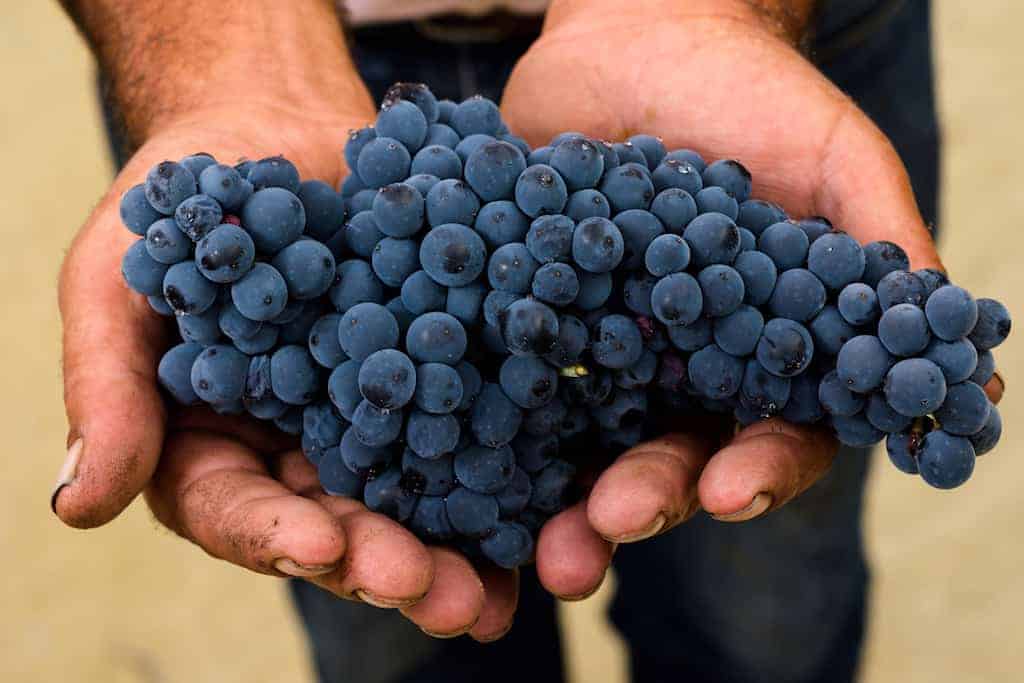What are Tannins in Wine?
Tannins are a class of naturally occurring organic compounds that are commonly found in wine. They are polyphenolic in nature, meaning that they are composed of multiple phenol units linked together. Tannins are typically extracted from grape skins, seeds, and stems during the winemaking process, and can also be introduced to wine through the use of oak barrels.
In wine, tannins are responsible for a variety of sensory characteristics. They contribute to the mouthfeel of wine, adding a sense of astringency, bitterness, and dryness. They can also provide structure and complexity to a wine, making it more interesting to taste and analyze. While they may not be as immediately appealing as other elements of wine, such as fruitiness or sweetness, they play an important role in creating a well-rounded and satisfying drinking experience.
Tannins are particularly important in red wines, as they play a key role in determining the wine’s age-ability and ability to improve with time. This is because tannins have a natural preservative effect that can slow down the oxidation process in wine. As a wine ages, its tannins will gradually soften and become less noticeable, which can lead to a smoother and more enjoyable drinking experience.
Tannins can also affect the flavor of wine, giving it a slightly bitter or astringent taste. Some people describe the taste of tannins as similar to that of black tea, with a dry and puckering sensation in the mouth. When tannins are well-balanced with other elements of a wine, such as acidity and fruitiness, they can add complexity and depth to the wine’s flavor profile. This macromolecule makes its presence known in your mouth by binding to proteins within our saliva. In doing so, these proteins are precipitated, creating contraction and dryness within the cellular structures.
RELATED: Winemaker’s Perspective – When Are Grapes Ready For Harvest?
Tannins and the Winemaking Process

There are a number of winemaking techniques that can be used to improve the presence of tannins in wine. One of the most important is extended maceration, which involves leaving the grape skins in contact with the juice for a longer period of time during fermentation. This allows for more tannins to be extracted from the skins and seeds, leading to a wine with greater structure and complexity.
Another technique that can be used to enhance tannins is barrel aging. When wine is aged in oak barrels, it can pick up tannins from the wood, as well as from any previous wines that were aged in the barrel. This can lead to a wine with more pronounced tannins, as well as other flavors and aromas that are associated with oak aging.
Winemakers can also adjust the level of tannins in a wine by altering the timing and method of pressing the grapes. By pressing the grapes more gently, for example, they can reduce the amount of tannins that are extracted from the skins and seeds. This can lead to a wine with a softer and more approachable mouthfeel, which may be more appealing to some drinkers.
Common Types of Wines and Wine Regions Known for Tannins
Cabernet Sauvignon from Bordeaux, France
Bordeaux is one of the most famous wine regions in the world, and its Cabernet Sauvignon is renowned for its firm tannins and complex flavor profile. Cabernet Sauvignon from Bordeaux is typically aged in oak barrels, which can add additional tannins and contribute to the wine’s structure and aging potential. The winemakers in Bordeaux also use a technique known as “assemblage,” which involves blending different grape varieties to create a wine with a balanced tannic profile and a unique flavor profile.
Nebbiolo from Piedmont, Italy
Nebbiolo is a grape variety that is grown primarily in the Piedmont region of Italy, where it is used to make wines such as Barolo and Barbaresco. These wines are known for their high levels of tannins, which can make them quite astringent in their youth. However, with age, these tannins soften and integrate with the other elements of the wine, resulting in a complex and highly sought-after flavor profile.
Tempranillo from Rioja, Spain
Tempranillo is a grape variety that is widely grown in Spain, particularly in the Rioja region. Rioja wines made from Tempranillo are typically aged in oak barrels, which can add additional tannins to the wine. Winemakers in this region also sometimes use a technique known as “carbonic maceration,” which involves fermenting whole grape clusters in a carbon dioxide-rich environment. This can result in a wine with softer and more approachable tannins, as well as a fruity and floral flavor profile.
Malbec from Mendoza, Argentina
Malbec is a grape variety that is native to France but is now most widely associated with the Mendoza region of Argentina. Malbec from Mendoza is known for its rich, dark fruit flavors and high levels of tannins, which can contribute to a powerful and structured mouthfeel. The winemakers in Mendoza often age their Malbec in oak barrels, which can help to soften the tannins and add additional flavors and aromas to the wine.
Syrah from the Rhône Valley, France
Syrah is a grape variety that is grown in many different wine regions around the world, but it is perhaps most famous for its use in the wines of the Rhône Valley in France. Syrah from the Rhône is known for its peppery and spicy flavor profile, as well as its high levels of tannins. The winemakers in the Rhône often use a technique known as “whole cluster fermentation,” which involves fermenting the grapes with their stems intact. This can lead to a wine with a more structured and tannic profile, as well as additional flavors and aromas that come from the stems.
Possible Health Benefits Associated with Tannins in Wine
Scientists are exploring the health benefits and anticancer properties of tannins found in various types of plants. In fact, it has been found that tannins help dilate our blood vessels, thus helping to reduce blood pressure and inflammation.
Additionally, many of their health benefits are related to their antioxidant properties. Antioxidants are compounds that help to protect the body from damage caused by free radicals, which are unstable molecules that can contribute to the development of various diseases and conditions.
One of the most well-known health benefits of tannins is their ability to reduce the risk of heart disease. Studies have shown that tannins can help to lower blood pressure and reduce levels of LDL cholesterol, which is often referred to as “bad” cholesterol. This can lead to a lower risk of heart attack, stroke, and other cardiovascular events.
When it comes to cancer, tannins have been shown to inhibit the growth of cancer cells in the laboratory. While more research is needed to determine the full extent of these effects, some studies have suggested that regular consumption of tannin-rich foods and beverages may help to reduce the risk of certain types of cancer.
Tannins have also been linked to improved digestion, as they can help to bind to proteins and other compounds in the digestive tract. This can lead to a slower and more gradual release of nutrients into the bloodstream, which may help to reduce blood sugar spikes and promote feelings of fullness and satiety.
It’s also become apparent that tannins may have antibacterial and antiviral properties, which can help to protect the body against infections and illnesses. Some studies have suggested that tannins may be effective against bacteria that are resistant to traditional antibiotics, making them a potentially valuable tool in the fight against antibiotic-resistant infections.
While tannins are not a miracle cure for any particular disease or condition, they do offer a variety of potential health benefits that make them an important part of a healthy diet. By incorporating tannin-rich foods and beverages into your diet, you may be able to improve your overall health and reduce your risk of a range of chronic illnesses.
Tannins are Everywhere!
Tannins are present in more than just red rapes. They can also be found just outside your door when you look at a tree or in your cup of green tea. Everything from the leaves to the roots of most plants contains tannins.
